Way We Were: Remembering the 1950 RAAF Wirraway crash on Maroochydore beach
Death rained from the sky on a packed Queensland beach when a shark spotting plane crashed in 1950, writes Dot Whittington.
QLD News
Don't miss out on the headlines from QLD News. Followed categories will be added to My News.
It was a typical summer weekend at Maroochydore, and the beach was packed with holiday-makers.
December 30, 1950, dawned a glorious, clear day and families from the packed seafront campsites of what was then called the North Coast, headed for the patrolled beach to escape the heat in the surf.
Music blared from a loudspeaker at the surf club as children built sandcastles and swimmers caught the late morning waves.
Way We Were: Meet the boy from Ipswich who bombed 98 targets in WWII
Way We Were: How Queensland ushered in 2021
Offshore, an RAAF Wirraway, a military aircraft not well suited to surveillance, was on its first morning shark patrol along the coast from Redcliffe to Noosa Heads. It wasn’t that long since a swimmer had died and two bathers had been attacked by sharks.
The pilot, Flight Lieutenant Herbert Thwaites, 27, and observer Sergeant Jeffrey Neill, 38, had spotted a big shark about 45m from the shore and feared for the safety of surfers outside the patrolled areas. They made about six tight circles over calm, sparkling seas, aiming to alert lifesavers to the shark’s location. The first run was about 30m high, but then the aircraft began to lose height on each run. On the last, it banked steeply and dropped below 9m – the height of the shark tower on the beach.
Lifesavers in the lookout tower saw the plane roar past them. It was less than 2m away and estimated to be travelling at about 120km/h.
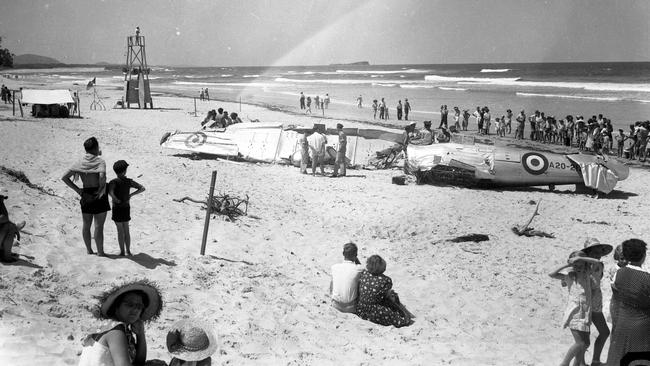
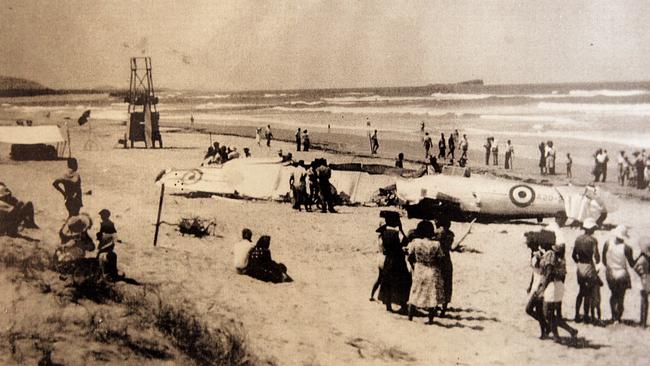
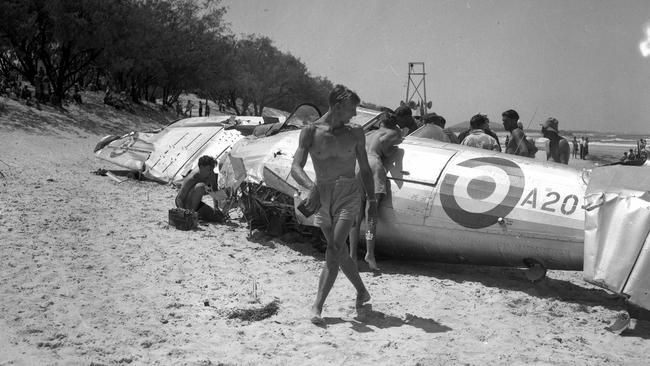
There were about 700 people on the beach and about the same in the water. In the seconds before impact the crowd panicked, running blindly and screaming.
It was 11.15am when the aircraft’s right-wing tip hit the sand.
The Sunday Mail reported the next day: “It tore its way into a group of people, then with a horrible roar turned a gigantic Catherine wheel, jumping over about 40 people and smashing itself in the sand by the further surfing flag 50 yards away.”
The scene was chaotic with injured children crying out for their parents, screaming mothers and men rushing to find relatives.
Three children were killed and another 11 people seriously injured. Lifesavers pulled the two crew members from the wreckage, the pilot with a broken leg and head injuries. The observer suffered only bruising to his head.
One man had been walking along the beach when he saw the plane coming in behind him. Sand was deeply embedded in his face and back, and he was bruised and scratched.
“It just skimmed over us. I dropped to the ground and pillowed my head on my arms. A child three yards from me had its legs cut off by the wing,” he said. “There was a woman near me with blood pumping from her legs. Near her there was a blonde girl, covered from head to foot with oil.”
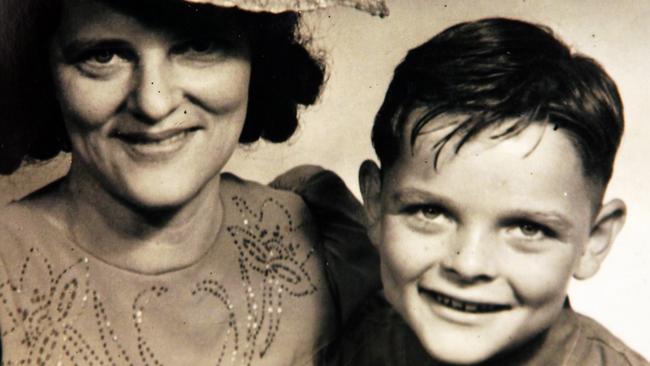
Six-year-old Pauline, the only child of Nellie and Douglas Probert of Nambour, whose infant son had died only five months earlier, died on the beach. Nellie, 28, suffered a broken wrist and severe shock.
Graham, 6, the only child of Stanley and Stella Blair who lived at the Gregory Terrace Housing Camp in Brisbane, succumbed to his injuries at Nambour hospital, while Liam, the 11-year-old son of Boggo Road Gaol superintendent William O’Connor and his wife Julia, was killed on the beach.
Among the critically injured was Beryl Borca, 32, of Innisfail, who had her foot amputated and the other leg so badly broken she needed bone grafts to save the limb. She was 12 weeks pregnant and lost the baby, and spent more than a year in hospital.
Merle Vinnicombe of Brisbane spent her 14th birthday in hospital a week after surviving the crash with compound fractures of both ankles. She survived a second crash when the ambulance taking her to hospital was extensively damaged in a collision.
Enid Shanks, 34, and Robyn Austin, 8, of Pittsworth, and Linda Hale, 39, of Brisbane were also seriously injured.
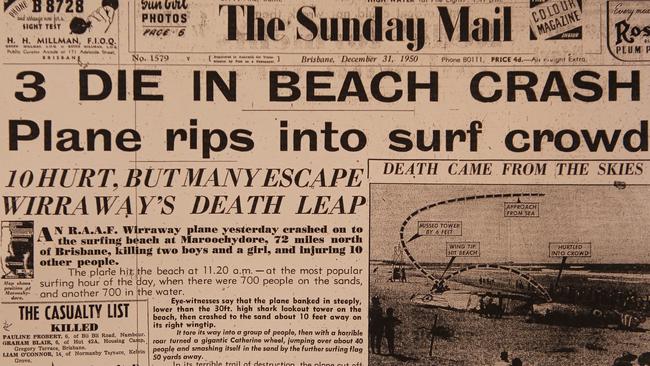
As the sun came out on the last day of 1950, more than 1000 holiday-makers returned to the beach to picnic on sand still stained by aircraft fuel. Many tried to souvenir pieces of the wreckage as RAAF crew took it away for examination.
It was the first time children had been killed in an RAAF accident.
An inquiry found that there was no mechanical fault, the plane had not been doing stunts or taking risks, the pilot was not being reckless and there were no suspicious circumstances.
The pilot simply had banked too much for the speed and power of the plane and could not recover control.
It was an accident, but one that brought untold grief to dozens of families around Queensland.


